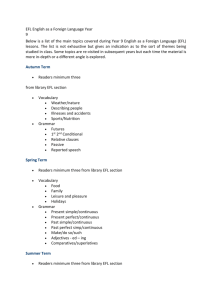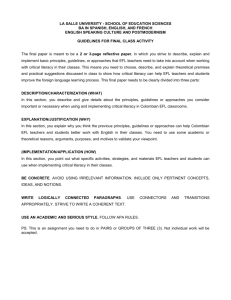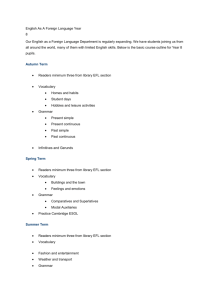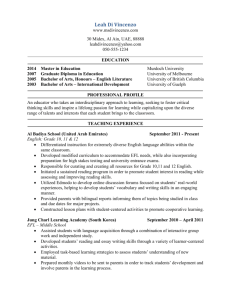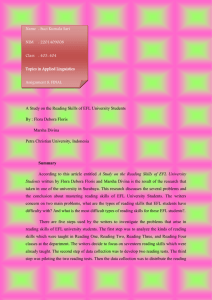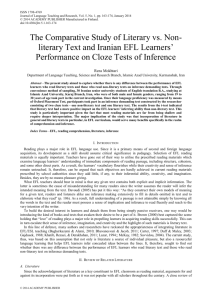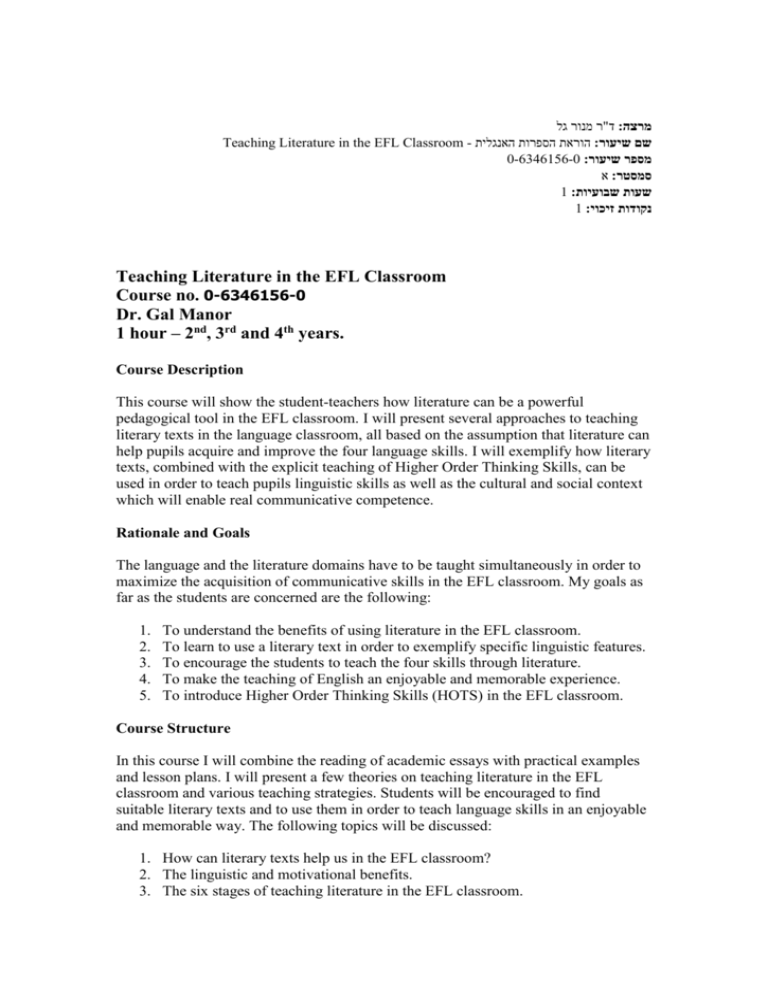
ד"ר מנור גל:מרצה
manrt el i uacnutca e uta eti gnhhceeT - הוראת הספרות האנגלית:שם שיעור
0-6346156-0 :מספר שיעור
א:סמסטר
1 :שעות שבועיות
1 :נקודות זיכוי
Teaching Literature in the EFL Classroom
Course no. 0-6346156-0
Dr. Gal Manor
1 hour – 2nd, 3rd and 4th years.
Course Description
This course will show the student-teachers how literature can be a powerful
pedagogical tool in the EFL classroom. I will present several approaches to teaching
literary texts in the language classroom, all based on the assumption that literature can
help pupils acquire and improve the four language skills. I will exemplify how literary
texts, combined with the explicit teaching of Higher Order Thinking Skills, can be
used in order to teach pupils linguistic skills as well as the cultural and social context
which will enable real communicative competence.
Rationale and Goals
The language and the literature domains have to be taught simultaneously in order to
maximize the acquisition of communicative skills in the EFL classroom. My goals as
far as the students are concerned are the following:
1.
2.
3.
4.
5.
To understand the benefits of using literature in the EFL classroom.
To learn to use a literary text in order to exemplify specific linguistic features.
To encourage the students to teach the four skills through literature.
To make the teaching of English an enjoyable and memorable experience.
To introduce Higher Order Thinking Skills (HOTS) in the EFL classroom.
Course Structure
In this course I will combine the reading of academic essays with practical examples
and lesson plans. I will present a few theories on teaching literature in the EFL
classroom and various teaching strategies. Students will be encouraged to find
suitable literary texts and to use them in order to teach language skills in an enjoyable
and memorable way. The following topics will be discussed:
1. How can literary texts help us in the EFL classroom?
2. The linguistic and motivational benefits.
3. The six stages of teaching literature in the EFL classroom.
4.
5.
6.
7.
Selecting a suitable text for different levels.
Using a literary text in order to promote the acquisition of the four skills.
Using HOTS in order to teach literature in English.
The new Bagrut format (2010).
Student Obligations
Attendance and participation: 15%
One presentation (introducing a lesson plan based on a short literary text): 35%
Final assignment (including a written lesson plan on a literary text chosen by the
student): 50%
Bibliography
Clandfield, L. (2010) Teaching materials: using literature in the EFL/ ESL classroom.
Retrieved on July 20th, 2010, from
http://www.onestopenglish.com/section.asp?docid=146508
Crane, M. (Ed.) (2005). Fifty great short stories. New York: Bantam Dell.
English Inspectorate (July, 2010) Integrating higher order thinking skills
(HOTS) with the teaching of literature. Jerusalem: The Ministry of Education.
Retrieved on July 20th, 2010 from
http://cms.education.gov.il/educationcms/units/mazkirut_pedagogit/english/w
hatsnew/
Gioia, D. & Gwynn, R. S. (2006) The art of the short story: 52 great authors, their
best short fiction, and their insights on writing. New York: Pearson Longman.
Savvidou, C. (2004). An Integrated Approach to Teaching Literature in the EFL
Classroom. The Internet TESL Journal, vol.X, 12.
Showalter, E. (2003). Teaching literature. Oxford: Blackwell.
Teaching literature companion website. Retrieved on July 20th, 2010, from
http://www.teachingliterature.org/teachingliterature/
Ur, P. (2006). A course in language teaching. Cambridge, Cambridge University
Press.

